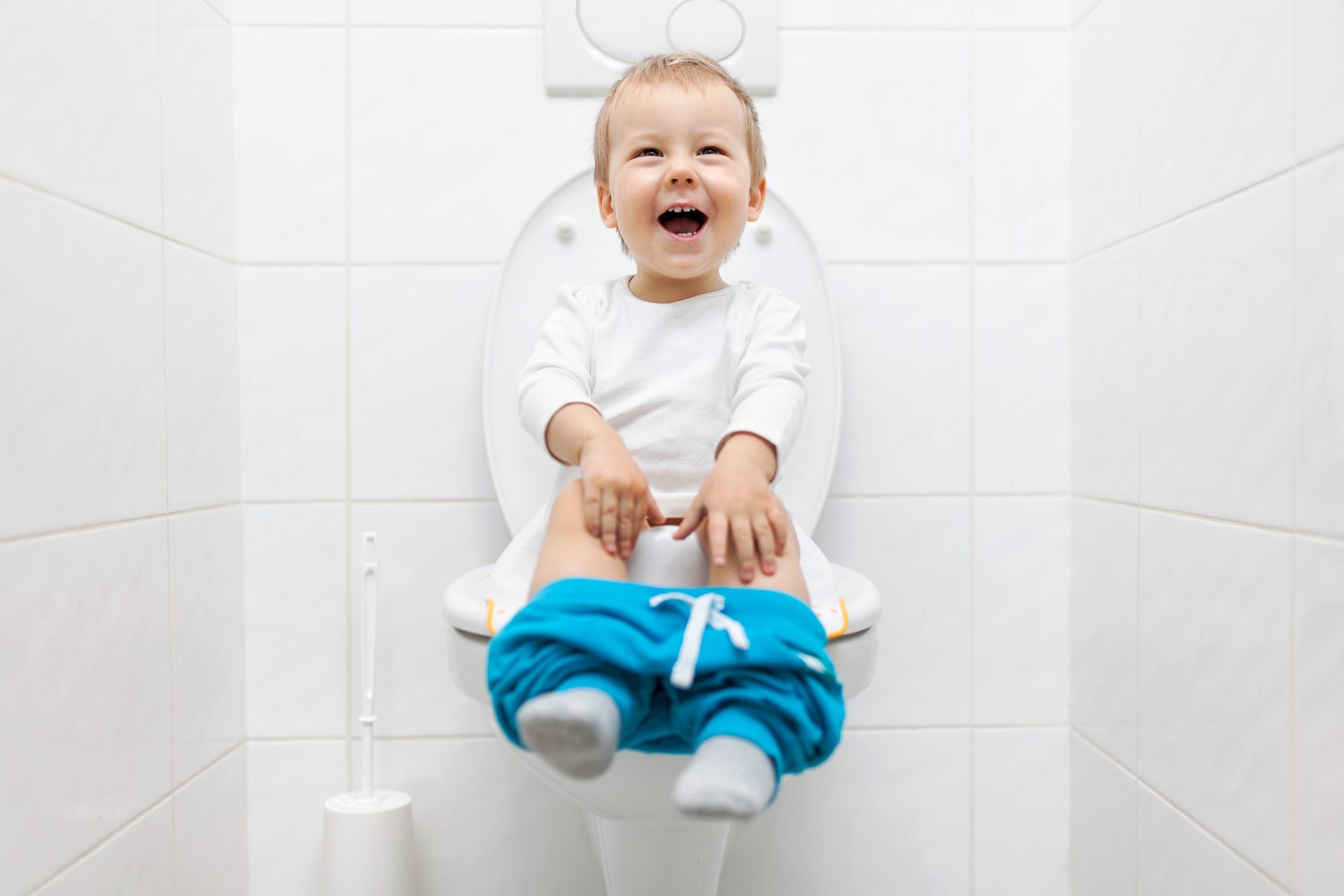Starting Potty Training

Written on May 11, 2020
Ready to start potty training your child? Are you unsure of where to begin? Do you feel hesitant to jump in without more information? Here are 6 ideas to do before you start the process of potty training.
#1 READ!
A great introduction to potty training for your child is to read books to increase the child’s understanding of what potty training means! There are numerous books available for your child’s understanding featuring their favorite TV characters, book characters, and many more. Some examples include A Potty For Me by Karen Katz, The Potty Book (one for boys and one for girls) by Alyssa Satin Capucilli, and Potty by Leslie Patricelli.
#2 BATHROOM SET UP
Next, make sure your little one’s feet are stable. Putting feet on a stable, flat surface, like a step stool, puts their pelvis in a perfect position to make going potty easier for the GI system. It also helps kids feel safe and stable enough to relax and let things flow.
#3 EXPLORE THE BATHROOM
Encourage diaper changing in the bathroom to help kids begin to associate that potty stuff happens in the bathroom, making the transition to the toilet easier!
#4 DRESSING
Have your child practice pulling pants and underpants up and down so they feel confident to remove clothing when an urgent need arises. Dress your child in easy to manipulate clothing so they can quickly undress themselves.
#5 UNDERSTANDING SENSORY
If your child is sensitive to sights, sounds, or smells, the bathroom may be overwhelming. Remove any unnecessary visual distractions like excessive toys, decorations, or toiletry items that may clutter the room. Limit the use of air fresheners, scented soaps, or perfume. Reduce sounds by closing the doors and windows. If possible, dedicate one bathroom to use for potty training.
#6 MAKE A ROUTINE
It a great idea to have a daily schedule and routine for how often your child should go to the bathroom. You can make a routine with steps the child needs to perform. A visual schedule of all the steps a child needs to complete can help them visualize what is next and reduce anxiety since they will know the expectations.
Example Routine: signal to use the bathroom, goes to the bathroom, pulls down clothes, sits on the toilet, urinates or defecates, grabs toilet paper, wipe, flush, pull up clothes, wash and dry hands, leave the bathroom.
Toilet training is a complex task to master! When your child understands what is expected of them during the potty training process, your child will feel confident. If you have attempted to potty train your child several times in the past and you feel like you have hit a roadblock, BDI Playhouse offers free screenings with an occupational therapist to provide additional strategies and interventions to assist with potty training.
Written By: Megan Wilkison, Occupational Therapist
